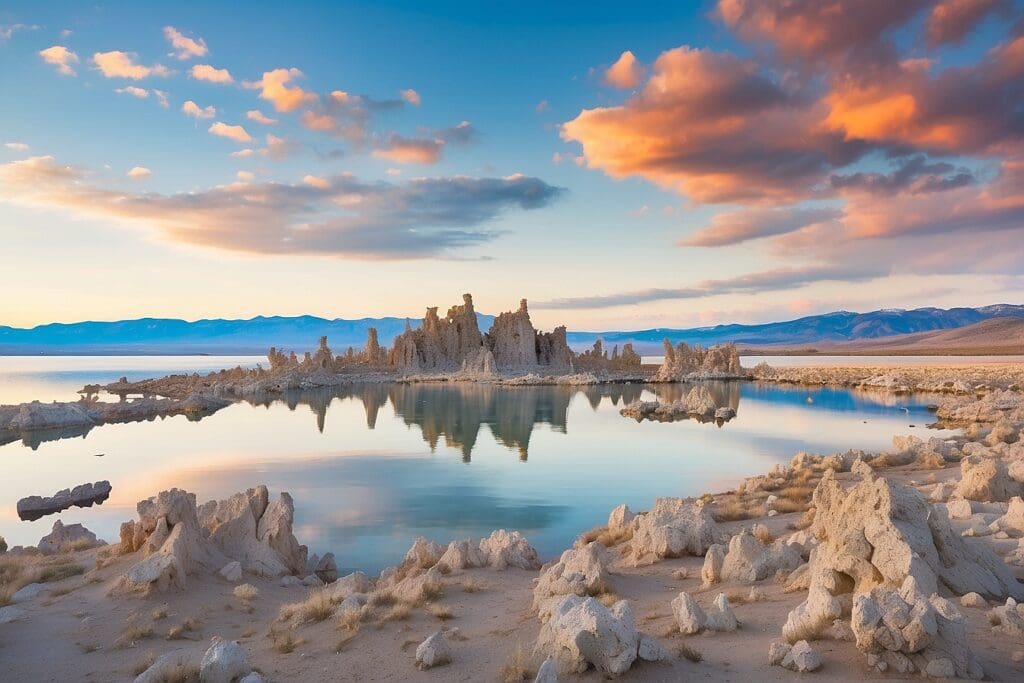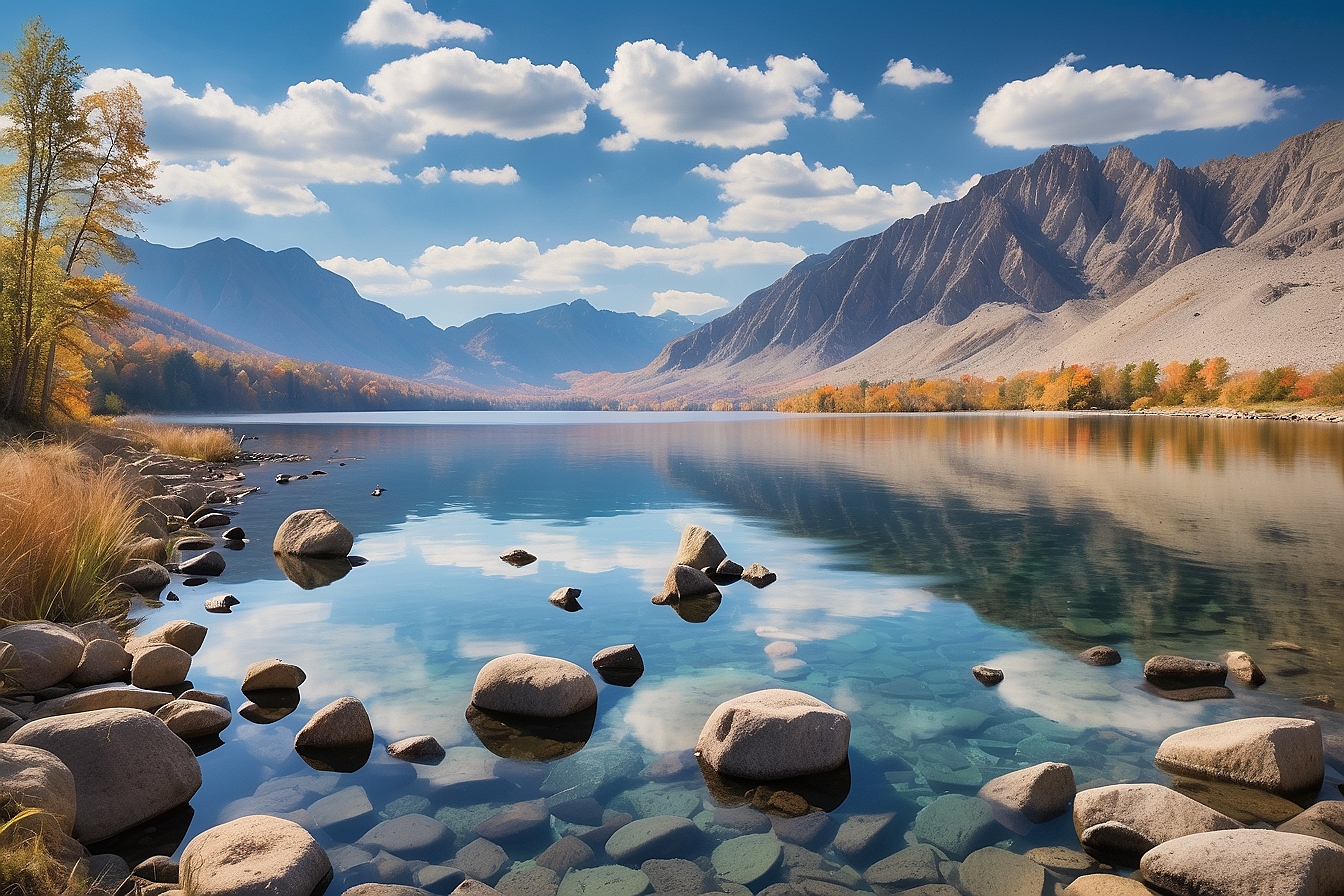Created at least 760,000 years ago as a result of a monumental volcanic eruption, Mono Lake is one of if not the oldest lake in the United States.1 Although significantly reduced from its original geographic expanse, the lake currently covers 66 square miles of volcanic landscape, and is situated in California, 13 miles east of Yosemite National Park.2 Nestled between the Sierra Nevada to the west and the Cowtrack Mountains in the east, Mono Lake has no natural hydrological outlet. The only way water escapes is through evaporation, although there are five freshwater tributaries that feed into the lake. When unobstructed, the tributaries maintain the lake’s water levels, thus supporting a delicate ecosystem. Similar to other landlocked lakes, Mono Lake harbors large a concentration of salt, which causes the lake to be extremely alkaline and inhospitable for typical aquatic species.3
The lake, however, is not at all devoid of life. Throughout the winter and spring, planktonic algae extend across Mono Lake’s surface as the algae feast upon recently upturned nutrients.5 In synch with the proliferation of the photosynthetic algae, both brine shrimp6 and brine flies7 emerge from the bottom of the lake and feed on the algae. Extremophiles such as these are the fundamental food source which attracts a diverse range of both nesting and migratory avian species, such as: California Gulls, Snowy Plovers, Eared Grebes, Wilson’s Phalaropes, Red-Necked Phalaropes, among 100 species of birds around Mono Lake. Each year, millions of birds flock to Mono Lake—varying in amount by species—and consume large amounts of shrimp and flies. Mono Lake is a critical feeding stop for many migratory birds flying south for the winter. Furthermore, nesting birds inhabit the lakes two main islands, where they establish “rookeries,” also known as breeding colonies.8 The stability of this unusual ecosystem depends on high waters levels, which have been threatened by human demand.

A California Gull amidst alkali flies at Mono Lake.9
Decline in Water Levels
In the mid-Twentieth Century, the growing conurbation of The Greater Los Angeles Area began to take advantage of the freshwater tributaries feeding Mono Lake. In 1940, the Division of Water Resources granted the Department of Water and Power for the City of Los Angeles (LADWP) the right to divert water from four of the five tributaries.10 The diversion of water for human consumption caused, as expected, a drastic decrease in water levels, exposing a land bridge from the outer shore to Mono’s Negit Island. Substantial disruption occurred within the ecosystem as nesting birds, such as the California Gull, became vulnerable to predation from coyotes. Additionally, the decrease in water levels significantly increased the salinity of the water, which adversely affected the lake’s brine shrimp and fly populations, further upsetting the food chain.
Bird Enthusiasts Pursue Legal Protection
In 1979, the National Audubon Society filed suit against the LADWP seeking to enjoin Los Angeles’ diversions, claiming that Mono Lake was protected under the Public Trust Doctrine.11 The Public Trust Doctrine, stemming from ancient Roman codes, asserts that the sovereign, or governing body, is the responsible trustee of navigable waterways and lands lying beneath them and thus must protect these resources for the greater public good. In the 1983 legal suit, National Audubon Society v. Superior Court of Alpine City, the courts concluded that protection under the Public Trust Doctrine extends to the tributaries of Mono Lake. This landmark ruling affirmed that the health of the lake and its dependent ecosystem were necessary to the greater public good and that protection of the tributaries was thusly necessary. The National Audubon Society argued effectively that while the tributaries were non-navigable—and thus not under the protection of the law—the detrimental effects that their diversion caused to the navigable waters of Mono Lake merited the same legal status. In 1994, the State Water Resources Control Board set minimum flows and limits on diversions based on current water levels.12
Mono Lake Today
Following the groundbreaking litigation, the Mono Lake Committee has been committed to restoring the lake’s non-navigable tributaries and protecting the surrounding waterfowl habitat. Since 1994, the lake’s level has risen ten feet and is projected to reach pre-diversion levels by 2014.13 The Mono Lake Committee has also been involved in helping the City of Los Angeles to meet its water needs without hurting already vulnerable water resources. Although the lake and its surrounding ecosystem may not reach pre-diversion conditions, they continue to provide a crucial habitat for indigenous waterfowl populations. Whether or not the conservation methods effectively restore sustainability to the precious ecosystem of the Mono Lake region, the geological wonder demonstrates the resilience of disrupted ecosystems, as well as the need for forward-thinking, conservationist public policy.





